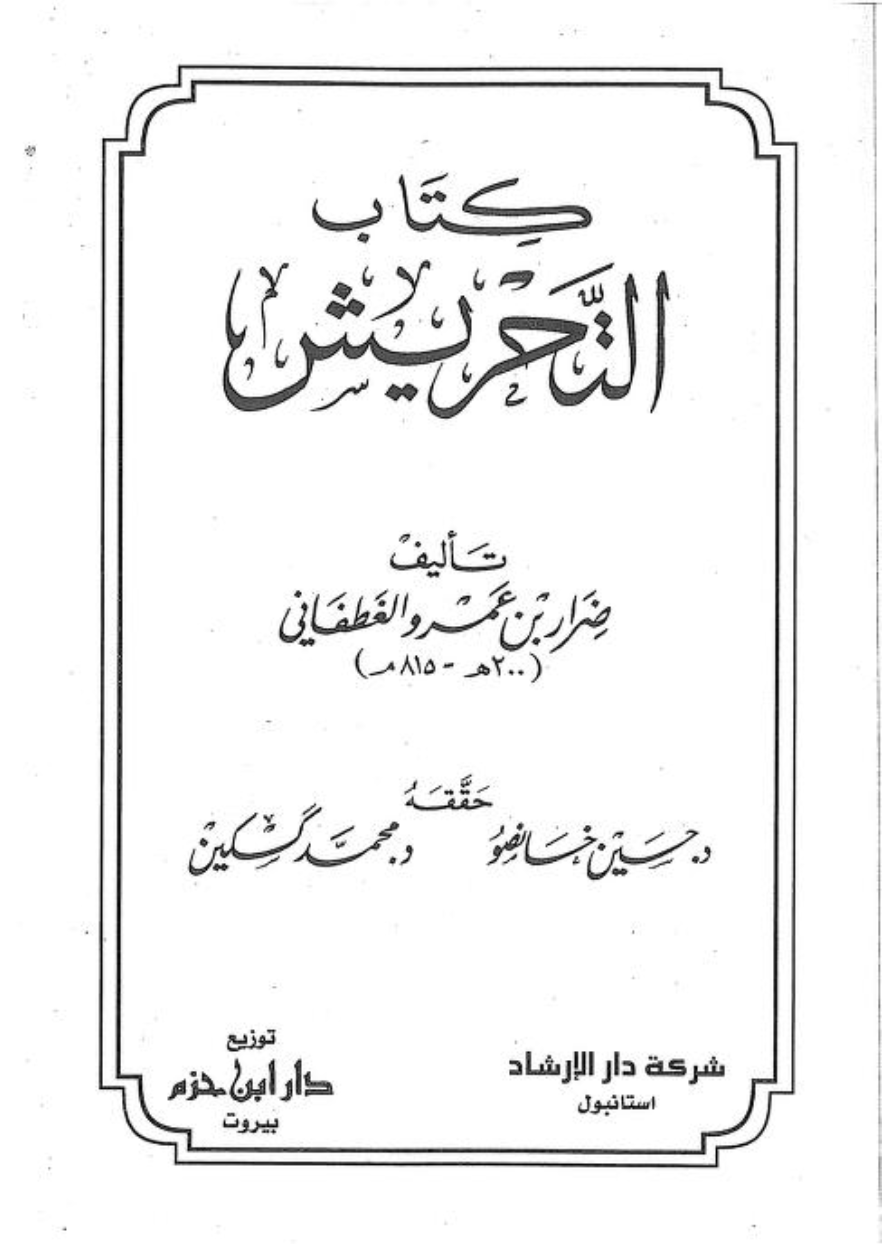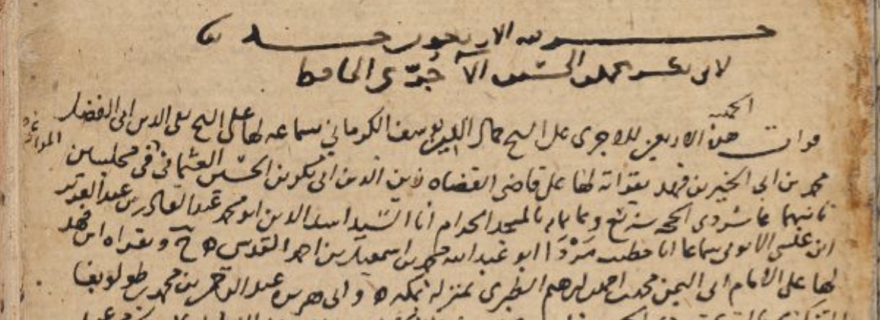The Origins of Sunnism
A common mistake made by non-specialists of Islam—and many in the media and popular writing industry—would have us believe that the events following the death of the Prophet Muḥammad in 632 CE precipitated the Shiʿi-Sunni divide. This is quite wrong. The demarcation of sectarian identities was brought into sharp focus significantly later, around two to three centuries after death of the Prophet Muḥammad. A fact overlooked by even capable historians is that religious identity markers such as "Sunni" require diachronic studies sympathetic of the intellectual and spiritual ambiguity that defined early Islam.
Take for instance the ahistorical claims made today in some quarters-and academic circles, too—that retrospectively make thinkers who lived before the fall of the Umayyads in 750 CE either Shiʿi or Sunni. These terms do not apply then, at least not in a meaningful way.
We are tempted to speak of the famous Muslim historian al-Ṭabarī (d. 923) as Sunni (and we are all guilty of using the term generically, and imprecisely even). But is this not predicted on the yet to be proven assumption that a pre-Seljuk (namely, eleventh century) Sunnism is discernible? That is not to say there weren't elements of Sunnism ("proto-Sunnism", that is) that predated the Seljuks. Long before the Seljuks the Ahl al-ḥadīth had settled on the pivotal doctrine of the Rāshidūn (or, tarbīʿ), that is, the Four Caliphs thesis. But we still don't have Sunnism tout court that can be pointed to in the said epoch.

As we approach the end of the ninth century CE—and not yet so close to the shores of the Seljuks—attempts are made to conceptualise a community markedly different from the earliest factions of Islam, namely the Shiʿah and Khawārij, in terms that suggest proto-Sunnism was a "response" to (proto) Shiʿism and the likes. Patrcia Crone pointed this out a while back in her God's Rule. But long before Crone, it was the towering and pivotal figure of Ibn Saʿd (d. 845) who makes one of the earliest attempts to draw the contours of Sunnism, offering the following key constituents:
One: A Sunni is one who holds a clear conception of the religious piety, standing, and authority of First Four Caliphs.
Two: A Sunni upholds the superiority of the tribe of Quraysh (the tribe of the Prophet Muḥammad).
Three: A Sunni religious identified with the markers of ahl al-sunnah wa l-jamāʿah (اهل السنة والجماعة) and ahl al-ḥadīth (اهل الحديث).
Four: A Sunni shares and commits to the historical memory of the Islamic community as that of the Prophet Muḥammad and the select individuals who carried forth his knowledge and transmitted his teachings, namely the Companions.

More evidence that the ninth century was a significant watershed moment in the consolidation of Sunnism is the known report of Ibn Sīrīn cited in Ṣaḥīḥ Muslim of Muslim b. al-Ḥajjāj (d. 875). The report offers a minimalist and passive but revealing definition of Sunnism as: those skilled in ḥadīth criticism and those who oppose the people of opinion and unprecedented innovation (البدعة).

Fast forward into the early tenth century and we begin to see a clearer conception of Sunnism, albeit still defined passively and against the "other". The tenth century authority al-Ājūrrī (d. 970) cites a report that says, "a Sunni is one that does not align with the known factions/innovations". Two things can be taken away from the above:

One, the genesis of Sunnism as a religious marker postdates the earliest religious, sectarian, and dogmatic factions of Shiʿism and Khārijism.
Two, a Sunni is known by his non assertive stance towards those factions in early Islam.
The eleventh century Shafiʿi theologian Hibat Allāh b. al-Ḥasan al-Lālakāʾī (d. 1027) offers a similar definition of Sunnism, namely, a religious identity defined extrinsically, that is, against the "other".

But who are these "others", the so-called folk of innovation, against whom Sunnism defines itself? We find the answer in what is possibly the oldest treatise on heresiography, the Kitāb al-Tanbīh wa l-radd ʿalā ahl al-ahwāʾ wa l-bidaʿ (كتاب التنبيه والرد على أهل الأهواء والبدع) by al-Malaṭī (d. 987).

According to al-Malaṭī, Sunnism is that which is neither Shiʿism nor Kharijism, and to a lesser extent Jahmism. As before, the criteria is passive and negatively defined: If a person does not identify as Shiʿi, nor Khārijī, nor Jahmī, then he is Sunni.
In the Seljuk period, the late eleventh and twelfth century, Sunnism takes one or more positive definitional attributes, such as:
(1) the belief in the probativeness of Quran and Sunnah;
(2) the belief in the Prophet Muḥammad as an intercessor and founding figure;
(3) a commitment to a positive theological and doctrinal articles of faith;
(4) a developed moral and legal system (fiqh);
(5) an elaborated narrative of early communal history;
(6) the emergence of pious traditions such as Sufism;
(7) the emergence of institutions for the production of Sunni legalists;
(8) a vocal opposition to non-Sunni religiosities and schools of thought.
It is also worth mentioning that the Sunnism (viz. اهل السنة) and ṣāḥib al-sunnah (صاحب السنة) was used by multiple Muslim groups and factions in the 800s and 900s CE as a polemical term—even the Shiʿah used the term for self-reference. For instance, the Ismaili philosopher and Chief Missionary, Abū Ḥātim al-Rāzī (d. 935), invoked the phrase ahl al-sunnah wa l-jamāʿah (اهل السنة والجماعة) as a self-appellation of Ismaili Muslims. It was indeed a term of prestige used across the board by many.
As a distinct religious community with the usual feats of orthopraxy and orthodoxy, Sunnism does not emerge before the eleventh century CE, as the evidence shows. Sectarian polemicists among the Shiʿah and the Khawārij would not have recognised the term Sunnism in the eleventh century as describing what later came to be known as Big Tent Sunnism, which formed post-1000s CE. While it is true that by the mid-900s CE it was becoming clearer and clearer that a new community is emerging (which we later render "Sunnism"), there is however far too much incongruence and fundamental disagreements to warrant the singular all-embracing label "Sunni".
Perhaps some might point to the Kitāb al-Taḥrīsh by the Muʿtazili Ḍirār b. ʿAmr al-Ghaṭafānī al-Kūfī (d. c. 815) to counter the later emergence thesis, arguing in the process that the author speaks of a relatively demarcated "proto-Sunni" community or religious identity of some sorts. However, as a matter of fact, Ḍirār does not speak of a conceptual unity of beliefs that would amount to the Sunnism of later times. He does predicate the label ṣaḥib al-sunnah صاحب السنة to a small group in Kufa known for the loyalty to Abū Bakr, ʿUmar, and ʿUthmān. Beyond that, Ḍirār does not hint of a clear-cut, or relatively demarcated community with their own orthopraxy and orthodoxy. The factions, or religious communities, that are mentioned specifically by Ḍirār are the Shiʿah, the Murjiʾah, the Jahmiyyah, the Muʿtazilah, and the Ḥashawiyyah. The "Sunnis" are conspicuously absent. For Ḍirār, the ṣāḥib al-sunnah does not belong to a religious community per se, rather it describes a praxis adopted by more than one group. This is not to say that the proto-Sunnis of the late eight century CE lacked a theology, or theological commitments of some nature, for most early factions, groups, tendencies, etc., held to some religious beliefs that set them apart from others; however, to speak of a theology proper would require considerable amount of evidence, and a lengthy conversation that is beyond the scope of a brief blog entry.



